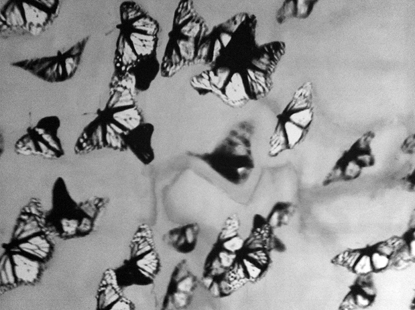“All that is coloured is embedded in the elementary contrast of black and white, because without these two tinting colours there would be no contrasting in the coloured environment. Everything coloured get lost in the black, and dissolves in the white."1 As with this statement black and white become universal, also the exhibition title expresses unmistakable statements: Florian Heinke. No God and his children. First the painter himself as brand, nothing more and nothing less. Secondly: No God and his children, which is about the people of his generation, who have lost their faith and also the ability to communicate.Consistently Florian Heinke reduces its colour range exclusively to black, which he applies directly on to nettle cloth, in order to use it as a radical medium for his painting, which he calls Black Pop. Pictures from the fast-moving media, like the Internet, magazines and newspapers, his own photos and montages are frozen to incredible monuments, as an arousing comment on the phenomenon of speechlessness. If it was the consumer society, which influenced the Pop-Art artists in the 1960’s, then Florian Heinke reflects interpersonal failure as symbol of the present. His pictures show the angry, whose despair flares up in violent street protests, and the homeless, who have lost all faith in themselves.The black block in all its explosive power and aggressiveness manifests itself as topos in his serially linked RIOTS, which is how the artist calls his contemporary landscape paintings, and the moment aloofness takes shape in the series HEIMAT as portraits of human icons, who all died lonely. The morbid vibrates in his pictorial language just as well as mystic and the unfathomable: enigmatic signs and vanitas-symbols such as snakes, skulls and allegorical angels of death are recurring elements. In a new, large sized work, black butterflies form a disastrous swarm. The old-Greek word for soul, ψυχή, is the equivalent to butterfly, and here, in the allegedly beautiful, finitude is found. Florian Heinke exalts the extreme, the immoral, the decline and the obsession with the Chiaroscuro of his painting to a symbol for eternal recurrence - Memento mori.
1 Harald Haarmann: Schwarz. Eine kleine Kulturgeschichte. Frankfurt am Main 2005, S. 9
The exhibition is supported by:
Naspa

